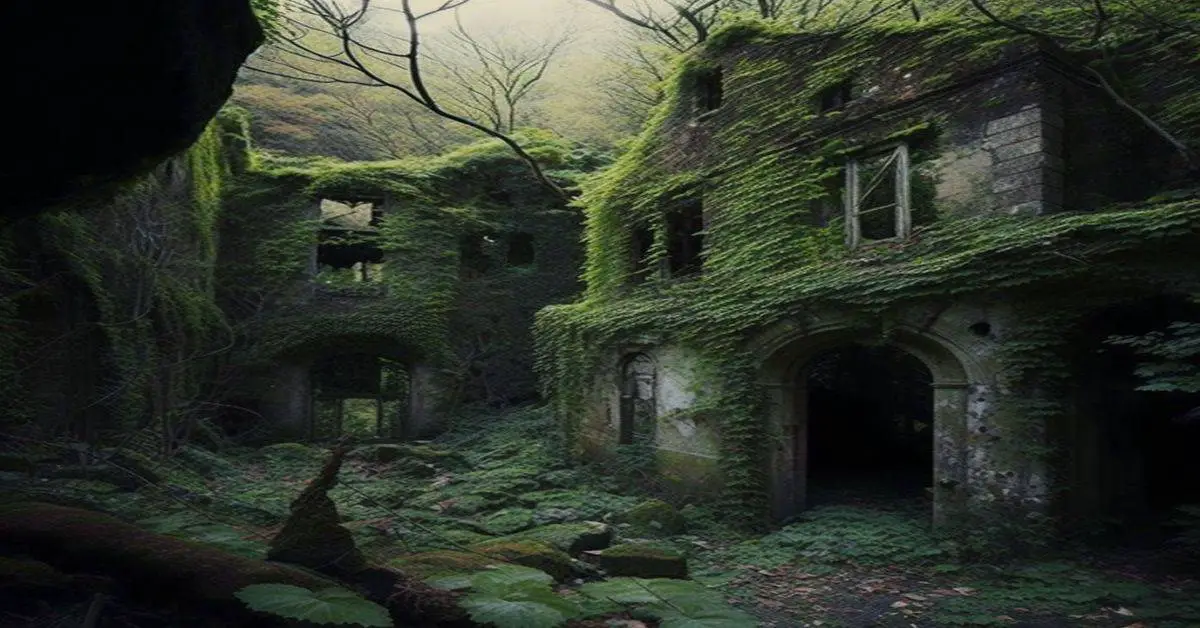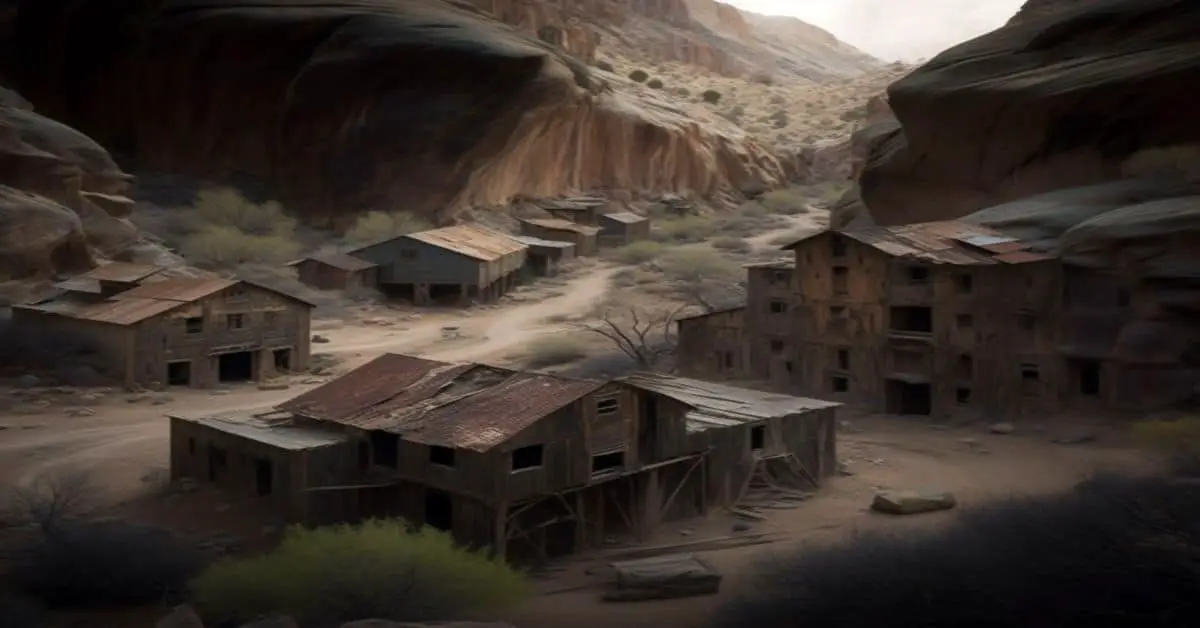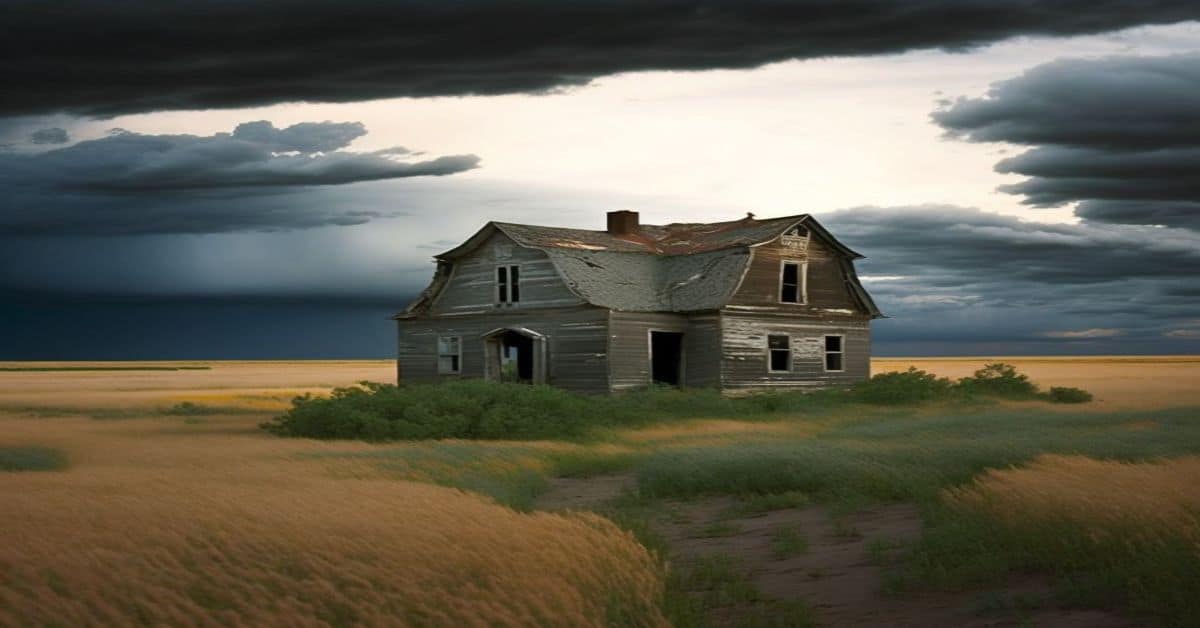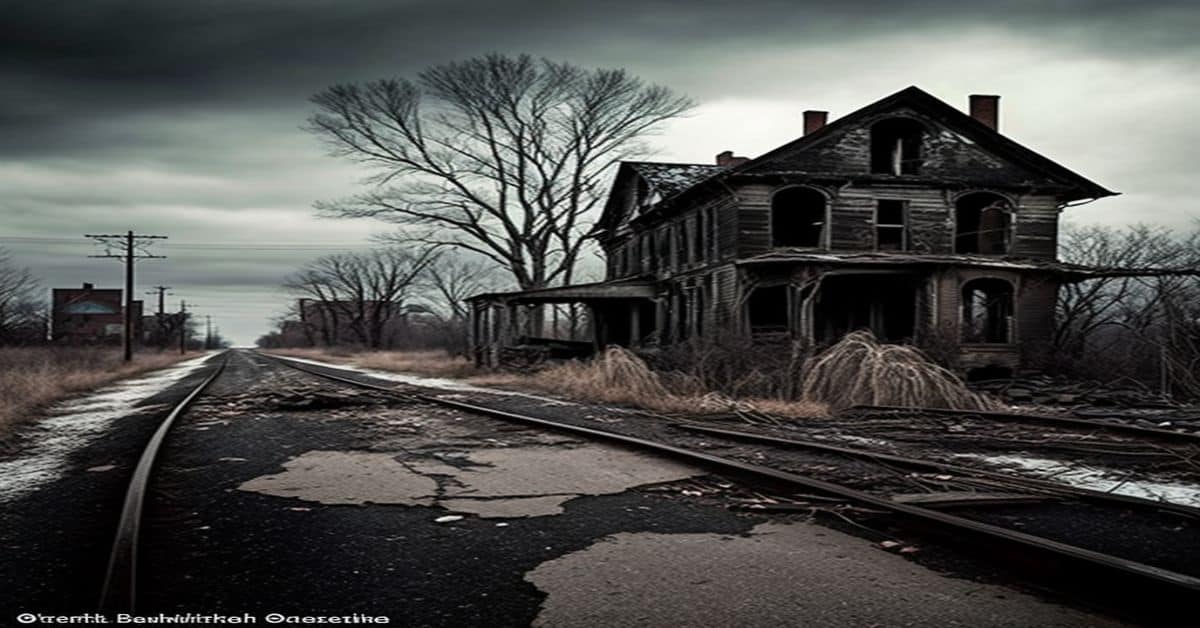Texas is full of proud history, including our ghost towns. We Texans love telling stories about the Alamo or the Battle of San Jacinto. And we’re also pretty proud of our ghost towns.
Here are five towns that have an interesting and eerie past but are now deserted. Read on to learn about them and plan your next road trip to one of these spooky places.
How Texas Became a State
When Texas became the 28th state in 1845, many towns were built, and communities were established. Some of these towns turned into cities, but others became ghost towns. In Central Texas, many abandoned ghost towns are now a part of history. They leave us with a piece of their story and a lot of mystery.
Terlingua, Texas
Terlingua is a tiny town with a fascinating history. In 2010, only 58 people lived there. But back in the day, Terlingua had around 2,000 residents and had all the amenities a town needed, like schools, a hotel, telephone service (without electricity), a company doctor, and mail delivery.
Miners searching for quicksilver in the Chisos Mountains made all of this possible. Today, the ghost town has only a few restaurants and bars, like the famous Starlight Theatre. You can also see adobe houses beside trailer parks.
Some companies are trying to preserve the history of Terlingua, and tourism is helping with this. People visit for the unique atmosphere and to go glamping near Big Bend National Park.
Chili Cook-Off
Each year, Terlingua holds a big chili cook-off that turns into a festival. It’s like Coachella, but with chili! The trading and mining companies also keep the town going. The people who still live there want the town to be inviting and have its character.
So, there you have it. Texas ghost towns are a proud part of our history and offer a unique look into the past. Take a road trip to one of these spooky towns and see for yourself.
Toyah, Texas
Toyah, Texas, was a small town with a population of 90 people in 2010. It started as a trading post for local ranchers, and soon after, it became a major cattle shipping destination with a population of 771 in 1910. Unfortunately, the Great Depression devastated the town, which has yet to recover fully.
Toyah is named after a Native American word for “flowing water,” as there used to be several flowing springs in the area. The town was popular during the time when railroads were the primary mode of transportation. Toyah was also home to some oil fields, which kept the economy running for a while. The town has a claim to fame through Amelia Earhart, who visited Toyah in 1928 when she was flying across the US. Today, Toyah has about 100 residents.
The Grove, Texas
The Grove, Texas was named after the area’s groves of live oak trees. In the mid-1880s, the town was home to several general stores, two grocery stores, and a population of 150. When State Highway 36 bypassed the town, the town’s prosperity began to decline, and by 2000, the population had dropped to 65 people.
Located near Temple, The Grove was once a thriving town thanks to its resources. It attracted farmers and was a hub of activity, but the population began to rapidly decrease in the 1940s due to agriculture consolidation and the placement of State Highway 36. Unlike other ghost towns, The Grove still attracts visitors today and is more like a historical town. You can listen to live music and visit the historical museum on the weekends.
The Grove was founded in the 1850s and is listed as a historic Texas town by the Smithsonian Institute. The town had a population of about 400 people at its peak, but today, it’s a ghost town with plenty of great photo opportunities. The town’s church still exists and is a reminder of its rich history.
Independence, Texas
Independence, Texas, is a small, unincorporated town near Brenham. It was once a wealthy city and home to Sam Houston and his family in the mid-1800s. Independence was a religious center and had two universities back then.
Baylor University was founded in Independence and was considered one of the best schools in Texas. However, the university was forced to move when the town leaders wouldn’t allow the Santa Fe railroad to come through. As a result, the town started to decline, and by the 1900s, the population had dropped to just 140 residents.
Despite its decline, Independence still has historic buildings for people to visit. Four columns from the original Baylor campus are still standing, making it a fun place to learn about Texas history.
Lobo, Texas
Lobo is a strange and unique ghost town in Texas with a population of only 15 people. The town was once a popular stop for travelers because it was the only place with a dependable water source for miles.
People started delivering mail to Lobo and even built a depot, but when people arrived, they realized that the town wasn’t as promised. In the early 2000s, a group purchased the town and turned it into private property.
Today, Lobo is owned by three German buyers working on reviving it as a place for artists to find inspiration. The town is frozen in time and named after the Mexican wolves that used to roam the area. Lobo went up for sale in 1980 for $60,000 and was purchased in 2001 for $20,000.
Thurber, Texas
Thurber is a well-known ghost town in Central Texas. It was once a big producer of “black diamonds,” which was coal. This town was so successful that it even had electric services before many other towns in Texas. But things started to change when the locomotives switched from coal to oil. This meant that Thurber’s coal was no longer needed. Within 15 years, the town was abandoned during the Great Depression. Nowadays, you can still see the empty red brick buildings in Thurber.
Indian Gap, Texas
The Indian Gap got its name because the settlers realized the Comanche raiders used to go through a gap near their town. Indian Gap was settled in 1857 and had a post office, church, school, store, and hotel. Although it was never as big as other nearby towns, Indian Gap could still keep its businesses going into the 1900s. But as people passed away or moved away, so did the businesses. In 1959, the Indian Gap school closed down and was later torn down. The post office closed soon after, making the town decline even faster. As of 2010, Indian Gap only had 27 residents. Nowadays, visitors can see what’s left of the once-populous town.
St. Mary’s of Aransas, Texas
St. Mary’s of Aransas was started near Copano Bay in 1850. It became a big port that sent construction supplies, cow hides, tallow, cattle, and cotton to other towns in South Texas.
But when many of the town’s men went to fight in the Civil War, the town was left unprotected, and the federal government took over the port. Their ships burned down a wharf and two warehouses. After the war, a steamship company called Morgan Lines started taking people and goods to and from St. Mary’s, Galveston, Matagorda, and Brazos Santiago. This continued from 1868 to 1875 but stopped because the shipwrecks near the shore made it too dangerous.
In 1869, St. Mary’s became the county seat of Refugio but lost it to the growing town of Rockport just two years later. The San Antonio and Aransas Pass Railway was built in Rockport instead of St. Mary’s. A hurricane in 1866 damaged the St. Mary’s school and harbors, and then another big storm in 1887 nearly destroyed the whole town. Because of these disasters, more and more people left St. Mary’s until the post office and store had to close down in 1907.
In 1909, St. Mary’s became part of the town of Bayside, which was started in 1908. You can still see the St. Mary’s cemetery and some of the houses that survived the storms from the late 1800s. You can also visit the Wood Mansion, built in 1875 for Major John Howland Wood. St. Mary’s is also where Clara Driscoll, famous for saving the Alamo, was born. There’s a monument to her at the site of her family’s old home.
Carlton, Texas
Carlton started as a settlement in 1877 and grew quickly because it was near travel routes and was good for growing cotton. Soon there were churches, schools, and a newspaper in the town. Between 1907 and 1910, the number of people living in Carlton went from 150 to 750. But over time, more and more people left until only 70 people were living there in 1980. Today, Carlton is a forgotten ghost town with many empty buildings.
Glenrio, Texas
Glenrio is an abandoned town located along Route 66 in Texas, near the border with New Mexico. In the early 1900s, a railway used to run through this town, and slowly, small farmers started to farm the surrounding land. Today, the historic district is listed on the National List of Historic Places.
The town once thrived with travelers coming through Route 66, but it slowly withered away when Interstate 40 was built during the 1950s. By the mid-1980s, only two residents remained, and only an abandoned gas station and a few other buildings still stand today. The Grapes of Wrath movie was even filmed here!
Barstow, Texas
Barstow is an abandoned town in Texas that was founded in the 1800s. It was named after George E. Barstow, a Texas transplant from Rhode Island and a leader in the irrigation industry. He was honored at the 1904 World Fair for his agricultural expertise with grapes.
Unfortunately, the town’s brief moment of fame was short-lived. A dam in a nearby area collapsed and flooded everything in its path. Several government buildings, homes, schools, and private enterprises remain standing, but the town has been deserted.
Some people hope that the vineyards will flourish again and the town will bloom with businesses.
Indianola, Texas
Did you know Texas has a ghost town by the beach? That’s right, Indianola was once a bustling town by the Gulf of Mexico.
But, the town had a rough time. Hurricanes hit the town hard and made it tough for people to rebuild and make a life there. Many European settlers came to Indianola, but the town never took off because of sickness, bad weather, and poverty.
After a huge hurricane in 1886, the town couldn’t bounce back and was left as a ghost town. The only thing left to see is the Zimmerman Cemetery.
Indianola was founded in 1844 and was supposed to be a competitor to cities like Galveston and New Orleans. At its peak, the town had over 5,000 people! But, hurricanes ruined the town’s chances of success.
Even though the city is gone, there’s still a memorial to visit. A big granite monument honors the French explorer La Salle.
Shafter, Texas
Shafter was once a town known for silver mining. It’s located near the Chinati Mountains, about 19 miles from Presidio.
In 1880, John W. Spencer discovered silver in the mountains and convinced three others to buy the land. They didn’t have enough money to mine the silver, so they sold the land to the Presidio Mining Company.
The town of Shafter grew as the mine hired more workers. It had a post office, a Catholic church, a school, a dance hall, saloons, businesses, and even a jail! The mine produced 2 million tons of silver ore, 90% of all the silver mined in Texas.
But, when the mine closed in 1942 because of a lack of workers and high production costs, the town started to shrink. Today, there are only a few signs that Shafter was once a bustling town. You can see the old Catholic church, some abandoned buildings, and what’s left of the ore reduction mill.
Catarina, Texas
The town of Catarina was started as a stop for trains. The story goes that the town was named after a lady who died during a fight in the 1700s near the area.
For 200 years, Catarina had everything a town needed – a post office, schools, and a big community. But because they didn’t have enough water and the economy was bad, the town got smaller and smaller.
Today, there aren’t many people living in Catarina. There are less than 100 people, and it’s considered one of Texas’ semi-ghost towns.
Bluffton, Texas
The Buchanan Dam is big and beautiful in Hill Country. It separated the water from the Colorado River, and while other towns lost people because of a lack of water, Bluffton had a lot.
But the water kept getting higher and higher until the whole town flooded. Years later, when the water went down, people saw what was left of the town.
Now, people visit Bluffton to drive four-wheelers or watch birds. But even after all this time, the town never returned its original number of people.
Have you been to any ghost towns in Texas? We would love to hear your stories in the comments!
Belle Plain, Texas
Belle Plain was once a thriving town in West Texas. In the 1870s, it was considered one of the most promising towns in the area. People were excited about its future and thought it was a great place to live.
Belle Plain was established in 1876 and became the seat of Callahan County in 1877. It had everything a growing town needed, including stores, a jail, a hotel, and even a newspaper. The town was also home to Belle Plain College, one of West Texas’s first colleges. The college was especially known for its music department, which had many grand pianos.
But things started to change for Belle Plain. A new town, Baird, was established just 6 miles away. Many people and businesses moved to Baird, and it eventually won the county seat in 1883. By 1987, only four families were left in Belle Plain.
Today, visitors can still see the remains of Belle Plain College and the dean’s residence. But no one lives in Belle Plain anymore.
Medicine Mound, Texas
Medicine Mound got its name because of its varying elevations. Initially, it was a small village, but even at its peak, it only had about 500 residents.
The land was sacred to the Comanche people, and it was very rural. The town started to decline during the Great Depression, but a fire in 1933 was the final blow. Only a few buildings remain today, but the four Native mounds that gave the town its name still stand.
Gilliland, Texas
Gilliland started as a village for new settlers. Several Norwegian families moved there in the late 1800s from nearby areas. The village was originally called Coyote but later renamed Gilliland after a district judge. The town was never very big because of its location. Now, only about 200 people live there.
Eliasville, Texas
Eliasville was named after the owner of the first store in town. In the late 1800s, the town was started for farming and ranches. It grew quickly when a cotton gin and flour mill were built. The town got even bigger during the oil boom, but then it was hit by a big fire that burned down some important buildings. After that, people started to leave, and the town never fully recovered.
Hagerman, Texas
Hagerman, located 80 miles north of Dallas, was founded in the early 1870s by farmers. Originally named Steedman, the town was officially established and given a post office in 1880. In 1909, the name was changed to Hagerman after railroad attorney James Hagerman, and by the next year, the town had roughly 250 residents and several businesses.
Hagerman’s prosperity was short-lived. The creation of Lake Texoma threatened to submerge the town completely, and by 1940, the population had dropped to about 150. In 1943, the completion of Denison Dam flooded the town, submerging most of it underwater. However, the church and cemetery remain above water level and are still visible. Periods of low water also uncover some signs of the farming town that once was.
Sherwood, Texas
Sherwood is another Texas ghost town with a fluctuating population. The town was originally the county seat in Irion County, established in the late 1800s with a courthouse and post office. However, the town’s decline began when the railroads bypassed Sherwood to a new railroad town called Mertzon, which later had a new state highway built through it.
By the late 1900s, Sherwood’s population was below 50. However, at the turn of the 21st century, it nearly tripled to 150. While that is still considered tiny compared to large metropolitan areas, there may be more for this tiny Texas ghost town.
Despite its decline, Sherwood remains picturesque, with its beautiful courthouse features a false clock with its hands set to the hour of Abraham Lincoln’s death still standing.
Conclusion
In conclusion, these Texas ghost towns serve as reminders of the state’s past and the impact of natural and man-made changes. Although they are now abandoned, their histories and remnants can still be seen and appreciated today.



